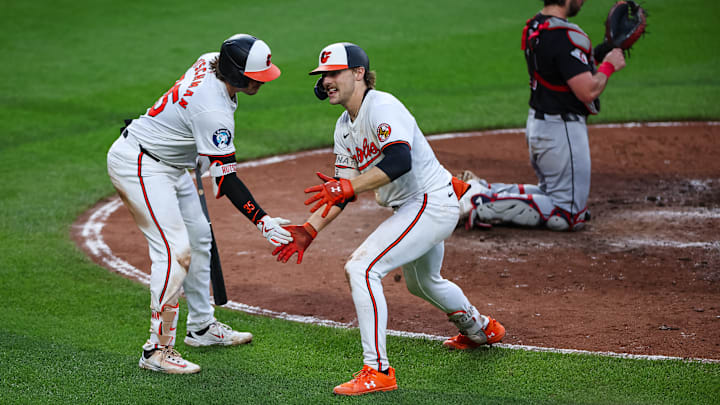The Orioles' .776 team OPS ranks first in all of baseball. Of course, OPS is the sum of SLG and OBP, so it would make sense to assume the Orioles' slugging- and on-base percentages are also among the best in baseball.
The Orioles' .461 SLG is far and away the highest in baseball, with the Dodgers sitting behind them at .439. However, the Orioles' OBP is .315, just 13th in baseball, and a far cry from what you'd expect of an elite modern offense.
This is primarily because the Orioles rarely walk, as they have a 7.2% walk rate and 219 walks, both third-lowest in baseball. Only the Marlins and White Sox, two of the worst teams in the league, have lower total walks and walk rates than the Orioles, a team widely expected to finish the year among the league's elite.
However, despite their low OBP and walk rates, the Orioles are still one of the most feared offenses in baseball. Why? The Orioles hit a ton of extra-base hits, especially home runs.
Their 132 home runs entering play on Thursday represent the most in baseball, 14 more than the Yankees, who sat at 118. They even set a franchise record with a home run in 21 consecutive games, thanks in large part to Gunnar Henderson's 26 home runs and counting.
Their 142 doubles and 18 triples ranked sixth and fourth in baseball, respectively, at the time of publication. This gives the Orioles 292 extra-base hits, the most in baseball and 15 more than the Dodgers, who have 277.
Orioles' high SLG and mediocre OBP have both positive and negative implications.
Their offense has hit the most home runs in baseball, scored the most runs in baseball, and has produced one of the best records in baseball. Of course, these are all great signs for the Birds. If they keep hitting like this, they will have no problem making a playoff run.
However, one of the fears with this kind of lineup is that its production is not sustainable. For example, a team with a relatively high SLG and OBP often scores runs in many different ways. So, if their slugging slows down, they can make up for it with their ability to hit singles and draw walks. In other words, they are more versatile, capable of winning games with home runs or with small ball against the game's elite pitchers, who thrive at tightening the screws.
On the contrary, a team like the Orioles, featuring a mediocre OBP and relying heavily on homers to score, will struggle to generate runs when the power well runs dry ... in theory.
This fear is somewhat justified. The last time a team with a regular season OBP lower than .315 won the World Series was in 1988, when the Dodgers had a .305 OBP. Every other season since, the World Series champion had a higher OBP than the current Orioles do.
And, among the top 10 teams in SLG this season, the Orioles have the lowest OBP, signifying that teams with similar offenses are drawing more walks relative to the Orioles. That's certainly a cause for concern.
The good news is that it is only halfway through the season. Since their OBP and walk rate are among very few offensive weak spots, it will hopefully be something their coaching staff targets down the stretch. Additionally, their OBP is not necessarily bad; it is average. But for a team that wants to make a deep playoff run, it should be higher than where it is at right now.
If these young, eager O's can be a little more disciplined, see more pitches, and work more walks, they will be even more feared than they already are — a cause for concern for the rest of MLB.
